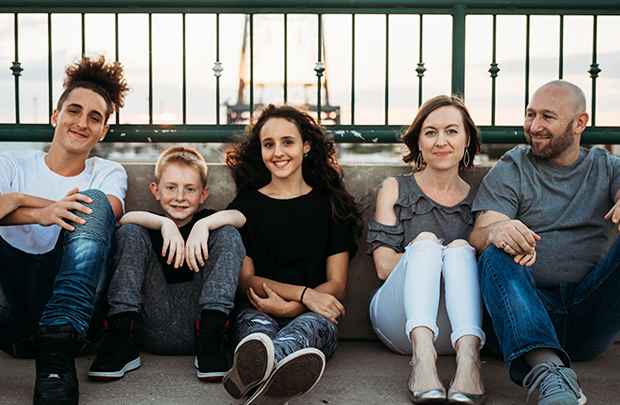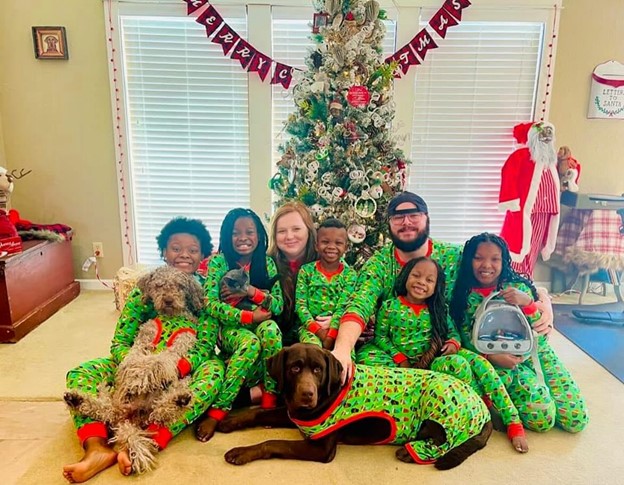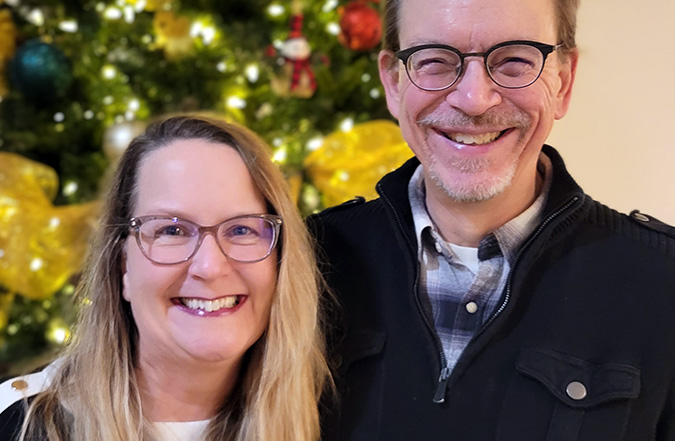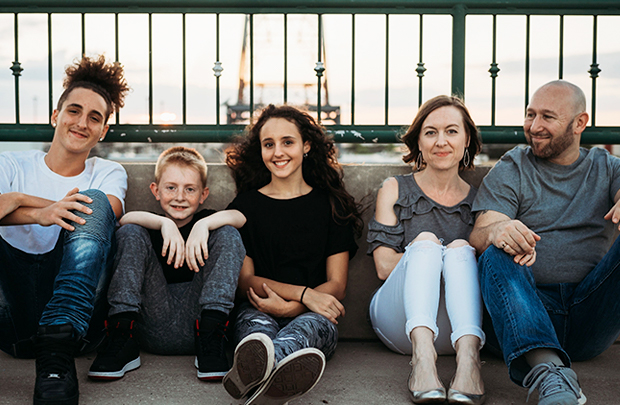
Joslyn and Jeremey Ahlgren had one son, 5-year-old Sterling, when they decided to try to adopt a teen. They learned about Glen, then 15, through Florida’s Heart Gallery website.
“Above all, we were drawn to Glen because he likes to look out for other people, and he appreciates an active lifestyle,” Jeremey said
They inquired about him, visited him in his group home, and he then began having overnight stays at their home. In 2014, after a trial period of living with the family, they all decided together that adoption was the way to go.
But not everyone thought it was a great idea.
“When we told people we would be adopting a 15-year-old, they went nuts,” said Joslyn. Only one friend supported the idea, while others thought it would be too difficult, or even dangerous.
That didn’t deter the Ahlgrens. Joslyn had grown up close to her adopted sister, and had always known that she wanted to adopt—preferably an older youth.
“Many of my feelings about adopting a teen stemmed from a very deep sense of injustice needing to be overcome,” she said.
Jeremey, who has worked in community services and as a special needs teacher, was equally interested. He described his own childhood as “pretty chaotic,” but with kind people who helped him out along the way. Adopting was a long-term way to give back.
Learning to relax expectations
Glen had been in a group home for two and a half years before living with the Ahlgrens. He had siblings who had either aged out or been adopted by other families.
Planning to adopt a young man “was a little nerve-racking for me,” said Jeremey, who wondered: “Are he and I going to be like two bulls?”
They adopted Glen, and Glen quickly treated them like his mom and dad. As an adult, Glen ultimately went to live with his biological mother. He is still in touch with the Ahlgrens and knows that they will always be there for him.
“I learned a lot from Glen about managing my own expectations and understanding a child’s draw to their birth family,” Jeremey said. “And it’s been really nice to see Glen relax into himself and find reward in life. He’s started taking care of his mother, and he has a great amount of pride in that.”
Adopting siblings
After Glen moved out, the Ahlgrens hosted some long-term houseguests, and “took a pause” before trying for another adoption. But one day, a social worker called Joslyn at her work and asked if she would be willing to be put on a list of possible adoptive families for two siblings in need of emergency placement. The social worker told Joslyn that the Ahlgrens were on a short local list of adoptive families who were prepared to take older kids and sibling groups.
“It seemed very out of the blue,” said Joslyn. But she and Jeremey discussed it, and agreed they would add their names to the list, figuring the chances of being chosen were low.
In less than an hour, the social worker called with the news that, as experienced adoptive parents, they were the first choice.
The Ahglrens scurried to resubmit their background checks the next day, and a few days later were able to read the files of Lauren, age 10, and her 14-year-old brother Nelson. Social workers interviewed the Ahlgrens, including Sterling, who was very excited about the idea of more siblings. Within a week, Lauren and Nelson had moved into the Ahlgren home.
“Beforehand you get butterflies because you don’t know the kids and if they are going to accept the new environment, but when they knocked on the door and we introduced ourselves, it all felt pretty natural,” said Jeremey.
He says their sibling bond helped. “They were very close and they relied on each other a lot and looked to each other for support. We never tried to do anything to discourage that.”
The kids were talkative, and the Ahlgrens encouraged communication. “It was very evident to us that they wanted to talk about things and share about their past and they wanted to live in those memories for a bit,” said Joslyn.
Empathetic parenting
The family found many ways to have fun together, through basketball, camping, and other nature adventures.
Some behavior issues surfaced, including skipping class, and, in one case, stealing money. But the Ahlgrens, who say they are fairly strict and provide a lot of structure, lean heavily on empathy, in part because of their own backgrounds.
“Both of us saw and experienced some challenges in our youth, so I think that gives us a good healthy perspective regarding where our kids are coming from,” said Jeremey.
One big message? “Making a bad choice does not make you a bad person,” said Joslyn. “We’re still going to love and care for you and guide you on a better path.”
Adopting a teen, and adopting siblings, has helped the Ahlgrens play a part in changing a culture they find can be too fixated on a narrow idea of “normal.”
“I think we need to approach ‘normal’ differently,” said Joslyn. “I’m so glad to be able to play a part in readjusting how people view that—adopting older kids or adopting siblings is something I hope more people can lean into. It can make a big impact.”
The Ahlgrens are featured in our podcast, Navigating Adoption: Presented by AdoptUSKids. Listen to them tell their adoption story.


